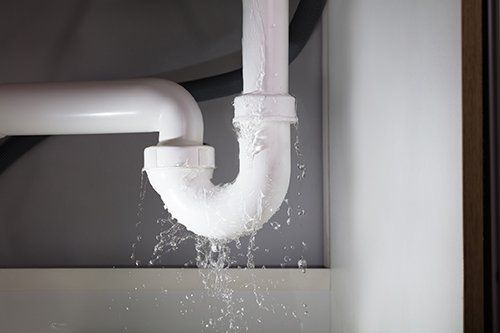Were you trying to find help concerning How to Find Water Leaks?

Leakages not just trigger waste of water however can also create unnecessary damage to your home and also promote undesirable natural growth. However, water leakages may go unnoticed given that the majority of the pipework in our house is hidden. By looking and comprehending for daily scenarios that create leakages, you can shield your house from future leakages and also unnecessary damage. Today, we will look at 6 leakage triggers that might be triggering your pipes to trickle.
Elbowing in roots
The majority of water leakages begin outside your home instead of inside it. If you observe an abrupt decline in water pressure, say in your tap, take time to head out and examine your lawn. You might discover damp spots or sinkholes in your yard, which might indicate that tree roots are attacking water lines triggering water to permeate out. You can have your plumber check for breach, especially if you have trees or hedges near your property.
Corroded water systems
As time goes by, your plumbing system ages as well as deterioration such as corrosion might start eating away the pipelines. This could be the source of staining or warping on your pipes. This asks for an inspection with your plumber right away. Consider changing the pipes because they are at a higher threat of rust than the newer versions if our plumbing system is old.
Faulty Pipeline Joints
The point at which your pipelines connect is frequently the weakest link in the waterline. Pipeline joints can deteriorate gradually, causing water leaks. The majority of pipe joints are not quickly noticeable. If you have loud pipelines that make ticking or banging sounds, especially when the hot water is turned on, your pipe joints are probably under a great deal of pressure. It is suggested to have your plumber evaluate your system once a year.
Instantaneous temperature adjustments.
Severe temperature modifications in our pipelines can create them to increase and also get all of a sudden. This expansion and contraction might trigger fractures in the pipes, specifically if the temperature level are below freezing. It would be best if you watched on exactly how your plumbing works. The presence of the formerly discussed conditions often shows a high risk.
Poor Water Connectors
Sometimes, a leakage can be brought on by loosened hose pipes as well as pipes that provide your home appliances. Most of the time, moving is what triggers the loosened water Links. You may discover in the case of a cleaning equipment, a tube might spring a leakage because of trembling during the spin cycle. In case of a water connections leakage, you might observe water running straight from the supply line or puddles around your home appliances.
Clogged Drains
Obstructed drains could be frustrating as well as inconveniencing, but they can in some cases wind up creating an overflow leading to rupture pipelines. Maintain removing any products that may decrease your drains pipes that could block them to avoid such hassles.
All the above are root causes of leakages but not all water leaks result from plumbing leaks; some leakages might originate from roof leakages. All leaks ought to be repaired quickly to avoid water damage.
Leaks not just cause waste of water yet can also trigger unneeded damage to your house and promote unwanted organic growth. By looking and also comprehending for day-to-day situations that cause leaks, you can safeguard your house from future leaks as well as unneeded damage. Today, we will look at 6 leakage creates that may be triggering your pipelines to drip.
At times, a leak can be triggered by loosened hose pipes and also pipes that supply your home appliances. In instance of a water links leak, you may observe water running straight from the supply line or pools around your devices.
How To Check For Water Leak In Your Home
How To Check for Leaks
The average household's leaks can account for nearly 10,000 gallons of water wasted every year and ten percent of homes have leaks that waste 90 gallons or more per day. Common types of leaks found in the home are worn toilet flappers, dripping faucets, and other leaking valves. These types of leaks are often easy to fix, requiring only a few tools and hardware that can pay for themselves in water savings. Fixing easily corrected household water leaks can save homeowners about 10 percent on their water bills.
To check for leaks in your home, you first need to determine whether you're wasting water and then identify the source of the leak. Here are some tips for finding leaks:
Take a look at your water usage during a colder month, such as January or February. If a family of four exceeds 12,000 gallons per month, there are serious leaks.
Check your water meter before and after a two-hour period when no water is being used. If the meter changes at all, you probably have a leak.
Identify toilet leaks by placing a drop of food coloring in the toilet tank. If any color shows up in the bowl after 10 minutes, you have a leak. (Be sure to flush immediately after the experiment to avoid staining the tank.)
Examine faucet gaskets and pipe fittings for any water on the outside of the pipe to check for surface leaks.
Undetected water leaks can happen without the home or business owner even realizing. If you suspect a water leak, but not able to find the source. It is time to contact a professional water leak detection service, The Leak Doctor.
How To Find a Water Leak In Your Home
https://www.leakdoctor.com/blog/How-To-Check-For-Water-Leak-In-Your-Home_AE197.html

Hopefully you enjoyed our piece on How to Find Water Leaks. Thanks for taking a few minutes to read through our article. Are you aware of someone else who is occupied with the topic? Be sure share it. We cherish reading our article about Common Water Leaks In House.
Maintain plumbing health; connect today.